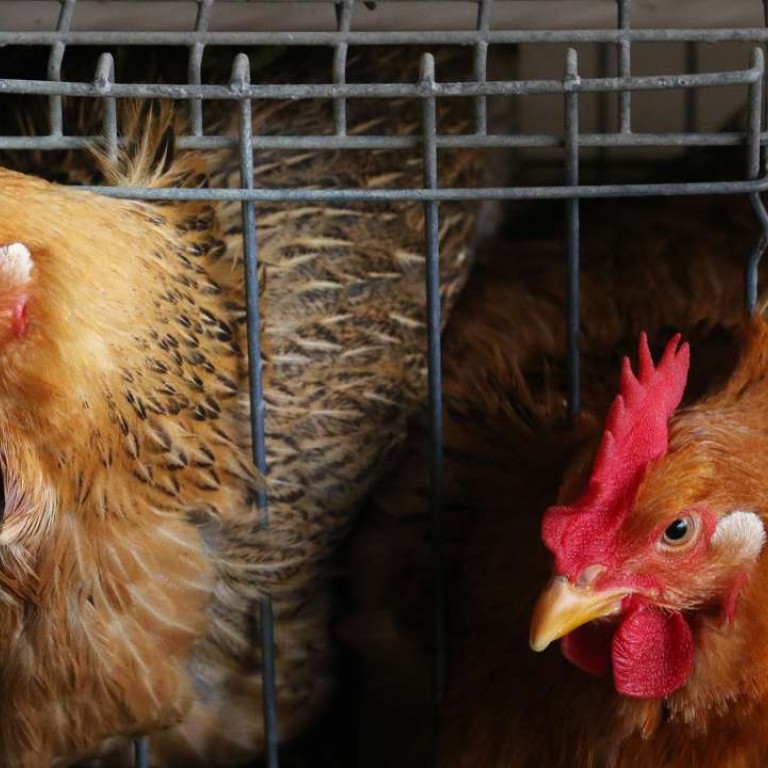
China’s Year of the Rooster to see a serious chicken meat shortage
As China ushers in the Lunar New Year, poultry prices have dropped unexpectedly during the peak holiday season for chicken meat consumption. While that’s a boon for Chinese consumers in the short term, analysts forecast the country will experience its worst chicken shortage in decades in the Year of the Rooster.
That’s because the knock-on effects of a two-year ban on US imports of breeding stock will soon be felt in the market, threatening supplies of the meat in the world’s No 2 poultry market and pushing prices up in the second half.
However, over the past month prices of white feather broilers, the major type of meat chicken in China, have been falling during what is the peak season for consumption, according to recent data from tech-food.com, a food industry information website.
“The unexpected drop in prices is mainly due to a concentrated supply of broilers before the holidays, as farmers offered too much meat chicken to the market,” said Chen Jiao, an agricultural analyst for brokerage Industrial Securities.
“The current supplies at farms are still at high level [as] it still takes some time for the market to digest all of them,” she said.
However, analysts expect supplies of white feather broilers to shrink sharply in the second half of 2017, which will push chicken prices significantly higher in the third quarter.
“China will have a chicken shortage in the Year of the Rooster,” analysts from Citic Securities said in a research report.

The grand parentflocks are hatched as “parents” of meat chickens, which are farmed for meat.
According to statistics from Citic Securities, prior to 2015, 90 per cent of China’s imports of grandparent flocks were from the US and France, the world’s largest suppliers of breeding chickens.
However, in January 2015 China banned imports of all poultry and poultry products from the US following an outbreak of high pathogenic avian influenza (HPAI). For the same reason, in November 2015 China banned imports of breeding chicks from France.
As a result, in 2015 China’s imports of breeding chickens fell 40 per cent to 680,000. In 2016, China only imported 500,000 breeding chickens, the lowest level in the past decade.
There was a nearly 40 per cent supply shortage in 2016 as total demand was around 800,000, according to an estimate by Zhongtai Securities.
Consequently, the supply shortage of breeding chickens will lead to a sharp reduction of meat chicken in 2017, analysts said.
“The whole process from selecting grandparent chicken to offering meat chicken to the market takes about two years,” said analysts from Citic Securities.
“Therefore, we believe chicken production in China will decline sharply in the next three years.”
Shenwan Hongyuan Securities (SHS) analysts expect chicken prices to jump in September as a result of the shortage.
We believe chicken production in China will decline sharply in the next three years
“There is a delay before the supply shortage of breeding flocks affects the downstream. So we believe the meat price will jump in September,” Zhao Jinhou and Gong Yanhai, analysts for SHS, said in a separate note.
What’s worse, new outbreaks of HPAI in other chicken exporting countries could threaten further the supply of chicken meat in China.
After imposing bans on imports from the US and France, China mainly imported breeding chickens from Poland, Spain and New Zealand.
However, after Poland discovered several cases of HPAI in poultry farms in December, Beijing slapped a ban on importing poultry from the country. Spain also found the virus in wild birds in January.
“Although there is no bird flu cases in Spain’s poultry farms yet, we can’t rule out the possibility of the virus spreading,” said Zhao and Gong from SHS.
“Risks are high that China faces another disruption of imports in 2017,” they said. “That will lead to further supply shortage in the next few years.”
While consumers may pay higher prices, SHS analysts are optimistic on the share performances of A share listings in the poultry industry, suggesting that the sector will see improved profitability if chicken meat prices rebound.
They suggest investors should put “overweight” positions on Shenzhen-listed Shandong Yisheng Livestock & Poultry Breeding, Shandong Minhe Animal Husbandry, Fujian Sunner Development, Shandong Xiantan, and Henan Huaying Agricultural Development.
However, if new cases of bird flu spread quickly, market sentiment could be dampened and consumers’ appetite for chicken will be affected, they warned.

